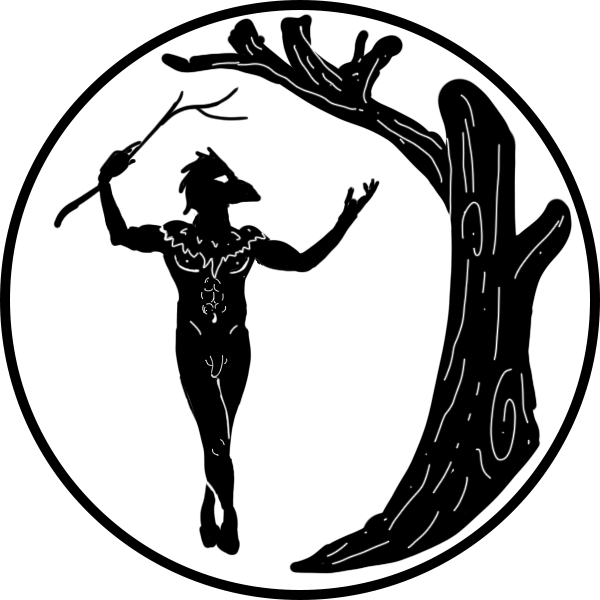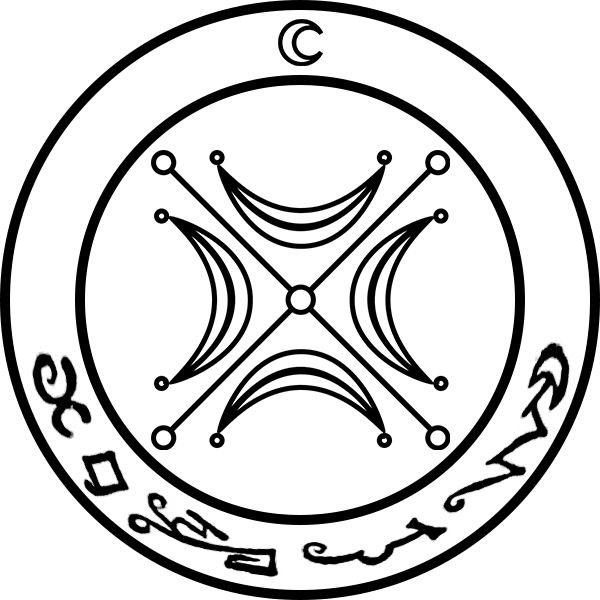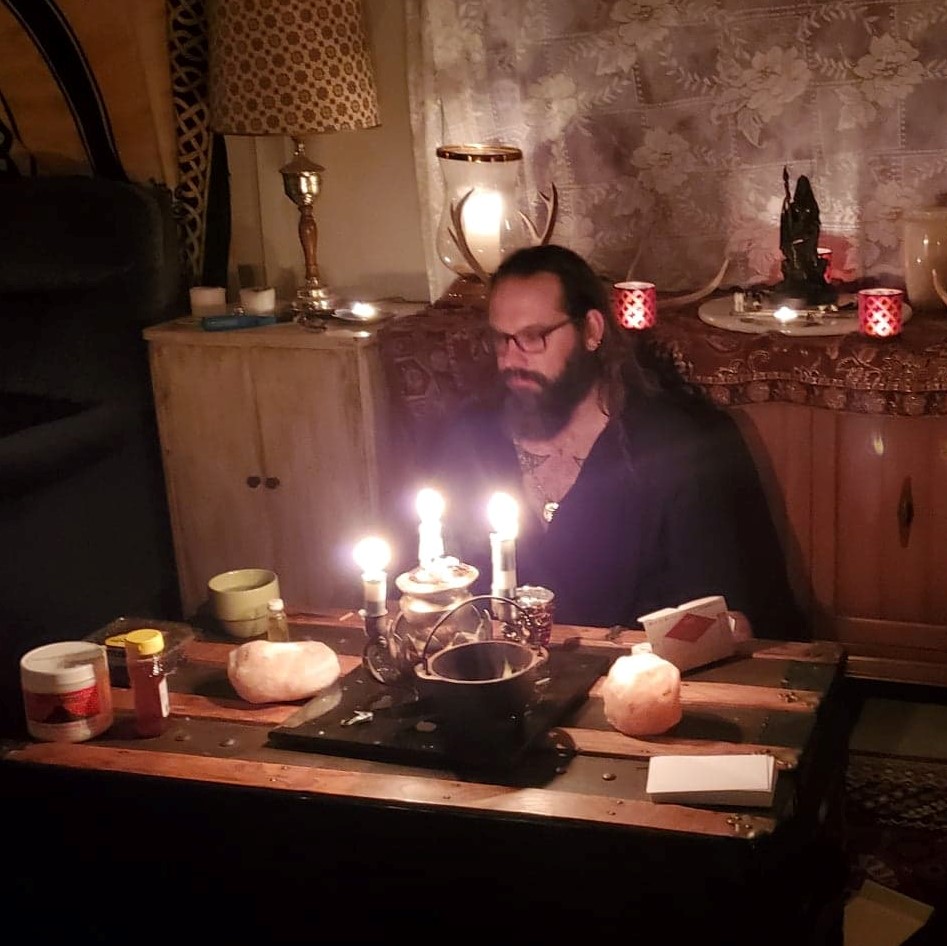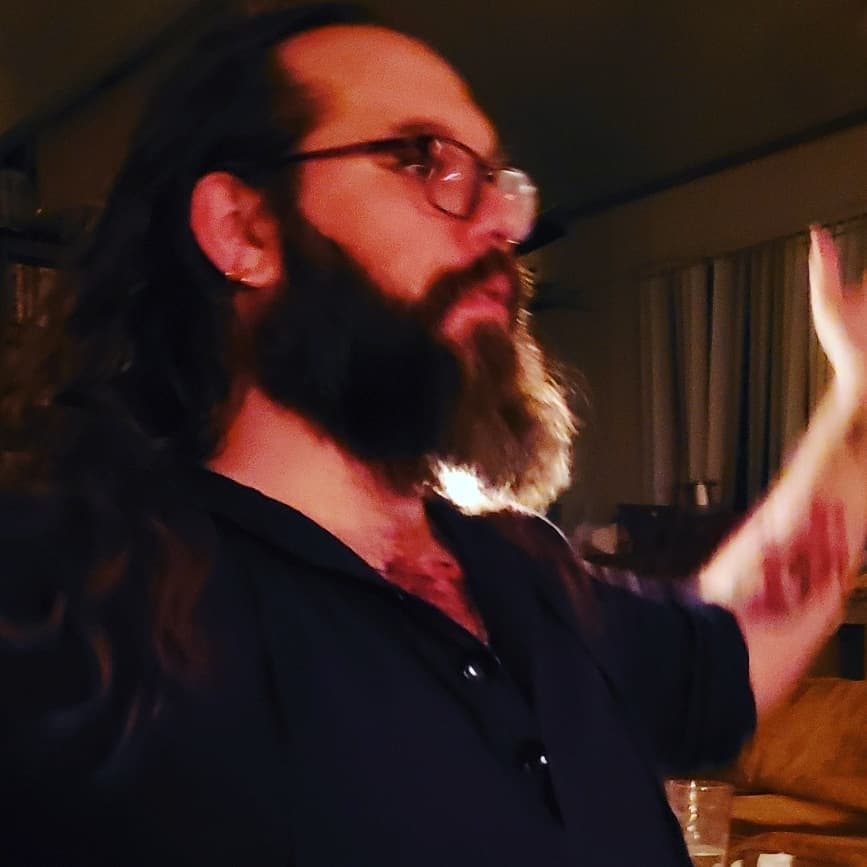I have been dabbling with old school astrological talismanic magic for a few years now. It started with the Ceremonial Experiment while I was in college, synthesizing what I was picking up from Rufus’ Opus blog with what I could glean from Christopher Warnock’s yahoo mailing list. I produced a handful of well-elected talismans that helped get me through college, and which still sit on my altar today (even though the prevailing wisdom is that talismans of paper and herbs never should have worked in the first place, let alone for so long). In the years since, I’ve produced a variety of talismans and performed an assortment of rituals using my ever-improving understanding of astrological timing and images, with varying degrees of success.
Over the last year or so I have finally deepened my understanding of astrology to the point where I can mostly follow Chris Brennan’s podcast and was delighted to receive his book for Christmas. And I have also, finally, begun to work my way through the Picatrix from cover to cover.
The Picatrix was written in a time and place where magic was understood through the lens of a very limited and limiting spirit model. Obviously, my own understanding an practice of magic is much more syncretic. My spirit modelling draws on Classical, Late Antiquity, Medeival, Rennaisance, and 21st Century shamanic spirit practices. I also work using 20th and 21st energy and spirit models.
I, personally, understand the planetary spheres as magical realms and currents in which spirits live. I believe that it is possible to access those currents directly, without intermediary spirits. I am also finding, through trial and error, that those two approaches are good for very different things. That is to say, that they can produce entirely different genres of error-comedy.
The Picatrix admonishes to have faith that the magic will work, and warns sternly against experimentation. Unfortunately, while I can be good at following directions, “do not experiment” is … not a direction I can follow. So the experiments continue, undaunted by stuffy medieval magicians.
The Framework
Stellar Sorcery, as the modern practice of performing spells and crafting talismans by the use of Medieval and Renaissance astrological timing is coming to be called, is a young discipline wherein the competing schools of thought are all shiny, new, and hot to the touch. The schools of thought within that discipline are too young to be named. One can only cite one’s influences — Christopher Warnock, Kaitlin and Austin Coppock, Clifford Lowe, and so on — and one’s references — the Picatrix, Agrippa, what have you. In case it wasn’t clear, those are mine. They might be ashamed to know it, given how fast and loose I play with the rules.
The components of Stellar Sorcery are deceptively simple:
1) Astrological timing. Certain things are available at certain times.
2) Vocalized prayer and petition. You have to say it out loud. You have to tell the spirits what you want.
3) Physical maeteria. The talismans are vessels for the power/spirits. They must be appropriate (however you define that from your primary sources of choice). They must be made as well as you are able.
4) Fumigation. You seal the deal by holding the talsimanic maeteria in the smoke of your offerings.
You can always add more, but these four things are essential. There’s not a lot that Warnock, Coppock, and Lowe all agree on. These four are it, and my experience so far bears it out.
The experiments I describe below are not the whole of my experience, only the most relevant and best-documented
2012 Jupiter in Sagitarius Talisman
My first semesters of college were a battle against the registrar. She didn’t want to take more credits than she absolutely had to from my declasse community college. At times it felt like she didn’t want to be bothered even looking at my file. I was in her office every week, as polite as I could be, but there wasn’t any traction.
Until, early in my ceremonial experiments, Christopher Warnock offered up this election to his Spiritus Mundi mailing list. Back then he announced elections far enough in advance that you could do something with them, and even offered pdfs with images and prayers. That was a good year for Jupiter, and I hit that election twice: once at dawn, and once at the 3 o’clock second Jupiter hour of that day.
Lacking better maeteria at the time (I was in college, no access to jewelry supplies) I made a paper talisman. I printed the Image of Jupiter that Warnock provided on one note card and various sigils, seals, and characters of Jupiter on the back. I glued the two pages together, sealing Jupiterian herbs and oils in the middle. I called upon the spirits and powers of Jupiter using the Thomas Taylor translation of the Orphic Hymns in the ritual I had cobbled together by following the work Rufus Opus, then blessed the talisman using Warnock’s Picatrix prayer.
I took that talisman with me to the registrar’s office the next day and not only did she finally open my file and finally start looking at my transfer credits, by the end of the semester I had gotten credit for things she swore up and down couldn’t transfer.
2020 Venus in Pisces Talisman
There were a series of semi-questionable Venus elections at the beginning of this year. The Moon and Venus were constantly dodging ill aspects to Mars and Saturn in Capricorn. But I was desperate to try my hand at electioneering and talisman crafting.
I had successfully cast a set of four shibuichi talismans as prototypes and wanted to experiment with casting during an election. A comedy of errors ended up surrounding the attempt to cast the talismans — Alvianna and I had some miscommunications and oversights about what tools I would need to bring from work, then her kiln turned out to be completely unsuitable, and we ultimately decided that casting in her shop was a “later” project. Perhaps a wiser magician would have stopped there, but I did some divination and decided to proceed by blessing the prototypes.
In addition to the relatively basic Stellar Image ritual — prayers, offerings, &c. — I added a component at the end where I asked that the name and sigil of the spirit of each talisman be revealed to me. I also formally consecrated a copper talisman that I had used to tap into the current of the image and been carrying for some time.
My talisman, to date, has produced good results. I have become increasingly inspired and disciplined about creating art. My friends and partners immediately became more physically demonstrative with me. And, by virtue of having their name and sigil, the talismanic spirit has effectively become a fourth familiar spirit (we are currently in search of an appropriate statue for them). I attribute the success of the Eye of Beauty ritual, in part, to my relationship with my familiar.
Reports from my friends who took the shibuichi prototypes have been more mixed. One has not really worn theirs. One has carried theirs to no effect. One described the talisman as heart-opening. One has reported frequent crying. I need to check in for updated reports.
Some observations from the whole of the process:
2020 Sun in Aries Talisman
We got this election from a variety of sources: a co-conspirator in the PGM Praxis group pointed it out first; it was also available in Nina Gryphon’s March election newsletter. We researched the election as thoroughly as we could, finding a couple potential issues with the Moon (according to Picatrix rules that later authors seemed to find excessively restrictive), but went ahead with it anyway.
We selected our prayers by divination, with clear results: 9 cups and 9 disks for the Picatrix prayer, Art and the Devil for the PGM prayer, and the Sun for both.
Aradia mixed a tincture while I scribed the sign of Och on a citrine pendant and three slices of amber that I had cut the night before. Then, together, we made paper talismans, one set bearing a Picatrix Image of the First Face of Aries and another bearing a Renaissance Image of the Sun. Things felt good, but off, until the last minute when I realized that we had not fumigated the talismans. Hastily we threw another lump of frankincense on the charcoal, fumigated everything, repeated the PGM Prayer to Helios a final time, and everything snapped into place. Because we used the whole election window to create and bless the talismans, I have not yet asked for names and sigils for them. I will do that once they’ve had a week to set.
Early Observations and Hypotheses
It’s too early to call anything a conclusion, except that magic is cool and making talismans is fun. I have, however, made some clear observations and have begun formulating some hypotheses.
The skill of the magician is relevant. All your magical skills are relevant, and more skills make a better magician.
Meditation makes it easier to see and hear spirits.
Having good relationships with spirits improves your stellar sorcery. Being beloved of your gods and familiars and allies makes your stellar sorcery stronger, regardless of your arts-and-crafts skills or your ability to find a perfect election. The reverse is probably also true: if you annoy the gods, they’re probably not going to do you any favors.
Better ritual makes for better magic. Elections can be short, but that doesn’t mean you can’t have everything good to go and spend half an hour before the window making offerings to your gods and familiars and getting them and you wound up for the work.
Doing energy work makes you a better vessel and conduit for planetary powers and currents. Just because Medieval and Renaissance writers didn’t know about it doesn’t make it not real or not relevant.
Paper talismans absolutely have a shorter life than talismans made of metal and stone. The once-prevailing wisdom that they are utterly inert, however, is demonstrably false. All things of this earth are mortal: remember how old the universe really is.
Working with a talisman as a spirit-ally seems to improve its efficacy exponentially.
Regarding casting the shibuichi talismans, specifically:
1) The talismans felt inert at the time of casting. Some people have told me that the pouring of the metal is the magically operative moment, but it didn’t feel like it to me. When I broke the talismans off the sprue, however, is another matter: it was like a tiny vortex opening up.
2) I have made a lot of magical jewelry using various schools of thought. Cleaning, filing, and polishing the rough cast in preparation to be enchanted felt like crafting a vessel, as opposed to other talismans I have made using other schools of thought where I could feel the spell coming together as I assembled each component, with everything snapping together as the final pieces went in place.
3) It is entirely possible that if I had been able to either cast the talismans, or pull them from their sprue during the enchanting ceremony, things would have gone even better. With that said, the spirits called did not resist entering the finished vessels and seemed happy at the time. The one I have worked with since seems very happy, except that they want the same honors my other familiar spirits receive, which is reasonable.

















